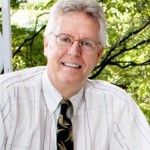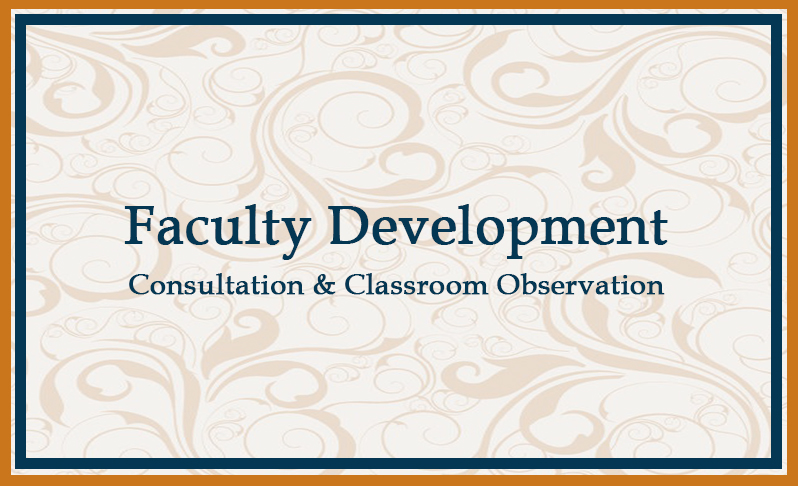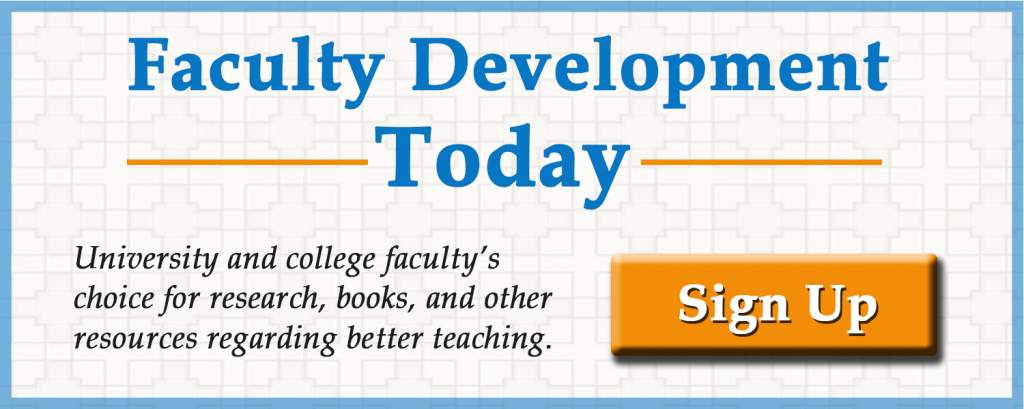Years ago before our university even had a Center of Teaching and Learning (CTL), it ran a faculty consultation process. One faculty member directed a cadre of consultants, and each of six consultants worked with two faculty members over sixteen weeks to improve the quality of one’s instruction. Unfortunately, the funding dried up, and faculty became disenchanted with devoting an entire semester to intense observing, consulting, formal assessments, and even videotaping, so the program ended.
Most lists of current services offered by CTLs billboard consultation and classroom observation. While the service is valuable, administrators, especially chairs, occasionally view it like hospital triage—please fix my “broken” faculty member. Sometimes these services are performed for entire departments, but most often a trained CTL specialist talks with an individual about pedagogical matters, serving as a coach.
Mini-Consultations
Now we provide what we call mini-consultations. Most faculty don’t want to spend a lot of time working on their teaching no matter how much they have been encouraged by chairs, promotion and tenure committees, and even deans. They are willing, however, to devote a small amount of time out of personal interest or academic survival.
Most often faculty needing help have identified a specific problem they wish to work on. They start with an email or by simply dropping in. Some faculty hang around after a workshop to ask for specific advice about one aspect of their teaching. Occasionally, we will be visited by a chair who has a faculty member whose assessment scores (we use the IDEA form) are not up to par.
While consultation and observation are most often connected, they are not always so. Recently, we had a faculty member drop in to chat about the whole idea of deep learning. We offered a general explanation and even gave her a book explaining some step that help students learn deeply. When another faculty member asked about the same problem, we saw the writing on the wall. The next semester we provided a professional learning community on the topic.
Related Reading: How to Communicate Best Practices in Higher Ed Pedagogy
Classroom Observations
Classroom observations are more complex as they usually demand three steps:
- Initial Meeting
- Actual Observation
- Follow-up Conversation.
In the initial meeting the CTL specialist talks with the faculty member to determine what the instructor wants. Some faculty are very specific. One of our earliest such experiences was visiting the class of a professor who specialized in question & answer active learning but had little wait time after his questions. We actually timed the responses and found them less than seven seconds. The initial meeting also establishes any secondary concerns and sets up a specific class time to visit.
For the actual observation we have evolved a rubric that we provide to the instructor beforehand. We developed our rubric by starting with Chism’s Peer Review of Teaching (1999), moving to an experimental classroom, developing a rubric through a professional learning community, and finally synthesizing all our research into Achieving Excellence in Teaching (2014). In fact, that book became a self-help guide because we built in an assessment structure we call R.A.T.E.—a Rubric for Achieving Teaching Excellence. At the end of the book we even provide an appendix with rubrics available for selves, colleagues, and students, evaluating everything from an instructor’s disposition to his/her ability to teach creatively.
Related Reading: Achieving Excellence in Teaching
One tip we should suggest for evaluators is be the first to arrive at the observed class and the last to leave. Strike up conversations with students. One of the biggest problems with classroom observations is they tend to provide snapshots of the instructor, and as an observer you want to know how regular are the practices and techniques you are watching. Gaining the trust of the students allows you to ask about the typicality of what you just observed and make better judgments about their typicality.
Even the best trained observers need to be reminded of other potential flaws in the system beyond their own bias (e.g., prejudice against any form of lecture). The Hawthorne Effect recognizes that those being knowingly observed will modify their behavior toward what is perceived as what the observer wants. Of course, if that new pedagogy is positive, then the teacher’s behavior is being modified effectively. Sometimes called the Heisenberg Effect, the principle states that the very act of being observed changes the normal dynamics. Our feeling is that if both the observer and observed are aware of these problems, something positive can still be gained.
In the follow-up conversation the observer details what has been learned about why the observer was there—e.g., are my classroom presentations organized? Almost always more is learned than what one was looking for. In fact, after thirty years of classroom observations we have learned several things:
- In an active learning era too many faculty rely on class-long lectures.
- Almost no faculty member is truly organized (see our article on keeping it C.R.I.S.P.).
- No faculty member is such an effective teacher that s/he cannot learn something from being observed.
- More than half of those observed don’t really like another authoritative presence in their classroom (Ego? Academic freedom? Inability to collaborate?).
- After only five minutes in a classroom, a trained observer can make a fairly accurate judgment on the overall effectiveness of the observed faculty member.
In short, we have found that much can be accomplished in a minimum of contact with faculty if consultation and observation are well designed and executed.
Author
 Ph.D Hal Blythe writes literary criticism to mystery stories. In addition to the eleven books he’s published with New Forums, Hal has collaborated on four books on a variety of subjects, over 1000 pieces of fiction/nonfiction, and a host of television scripts and interactive mysteries performed by their repertory company. He is currently co-director of the Teaching and Learning Center for Eastern Kentucky University. Meet Hal Blythe.
Ph.D Hal Blythe writes literary criticism to mystery stories. In addition to the eleven books he’s published with New Forums, Hal has collaborated on four books on a variety of subjects, over 1000 pieces of fiction/nonfiction, and a host of television scripts and interactive mysteries performed by their repertory company. He is currently co-director of the Teaching and Learning Center for Eastern Kentucky University. Meet Hal Blythe.



